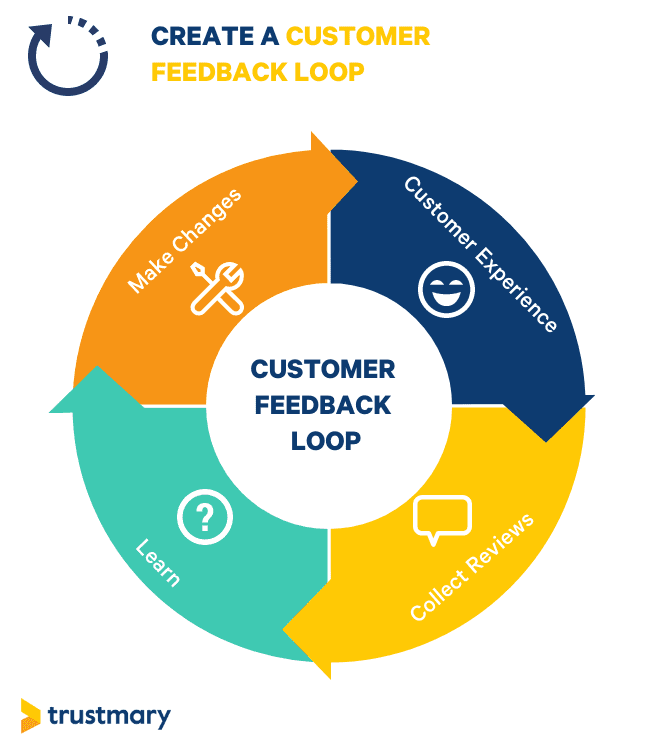Bad roofer reviews: How to React


For roofing companies, bad roofer reviews aren’t the end of the world.
They’re an early-warning system.
Handled well, they drive operational fixes, protect local rankings, and convert skeptics into customers. This guide shows how to respond smartly, with real examples, and why even harsh feedback is useful when you’re running a repeatable customer-feedback loop.
I've worked in the roofing industry before starting my work in digital marketing, so I know this issue inside and out. Even though I'm talking about roofer reviews, the same principles about responding to negative reviews apply to other industries:
- HVAC
- Window fitters
- Carpenters
- Sparkies
- etc.

The Mindset: Every 1-star Is a Free Inspection Report
Treat each bad roofer review like a free audit.
Most public complaints read like a punch list:
- Where the leak shows up
- Which appointment was missed
- What part of the warranty felt unclear, and
- How cleanup fell short.
That’s field intelligence you didn’t have to buy.
Teams that systematically collect and act on feedback spot patterns sooner, fix root causes faster, and turn detractors into proof that your company owns outcomes.
For example, a simple automated NPS survey after a job is done goes a long way in detecting what customers think about you.
Google Review Statistics for Roofers (October 2025)
We did some research on how different roofing companies are currently rated on Google.
The data consisted of over 11,000 companies and 214,517 reviews in total for the roofing sector.
Here are the findings of the UK Google review benchmark 2025 study:
| category | company count | average rating | average review count | total reviews | average 1-star reviews | average 2-star reviews | average 3-star reviews | average 4-star reviews | average 5-star reviews | max number of 5-star reviews | max number of 1-star reviews | min number of 1-star reviews | |
| Roofing contractor | 10404 | 4.65 | 18 | 185323 | 0.74 | 0.07 | 0.06 | 0.25 | 16.69 | 558 | 105 | 0 | |
| Roofing supply store | 662 | 4.57 | 33 | 22118 | 1.94 | 0.39 | 1.02 | 3.21 | 26.85 | 739 | 111 | 0 | |
| Waterproofing service | 238 | 4.54 | 29 | 6874 | 1.53 | 0.14 | 0.17 | 0.91 | 26.13 | 1134 | 88 | 0 | |
| Roofing Service | 4 | 5 | 51 | 202 | 0 | 0 | 0 | 1.25 | 49.25 | 108 | 0 | 0 |
Interestingly, the average review count isn't too high, averaging at 32.75 reviews.
Furthermore, roofing companies typically only have 0.74 1-star reviews on average.
The maximum number of 1-star reviews in this data set was 105.
So, if you get bad reviews, you can calm down, as, according to the data, every single roofing company has at least one 1-star review.
Creating a Google review report can help you see the bigger picture at one glance instead of focusing on just the few negative reviews you have.
What “Bad Roofer Reviews” Typically Say
I don't want to bash anyone, so I've anonymized the online review examples used. I'll focus more on the general themes that come up.
If you're curious how things look in your area, you can use this technique to find the worst reviews from your competitors on Google My Business:
How to Find Your Competitors' Bad Roofer Reviews from Google
- List your competitors
- Open the company’s Google Maps profile → click Reviews → Sort → Lowest.
- Copy the worst comments into a separate text file
- Give the file to ChatGPT to analyze common pain points
The customer insights help you position yourself better against your competitors in your marketing.
Or you can also use Trustmary's UK review analyser to see how you stack up against your local competitors based on your Google reviews.
If other roofing contractors are called untrustworthy, showing what a reputable roofer you are can go a long way in winning new clients.
Okay, moving on to the most common themes people mention when giving a negative review.
1) Leaks after a new roof + warranty dispute
“Reroofed… with a 10-year warranty… called about a leak… told it was not from the work that was done.”
Warranty issues are tricky, so be prepared to walk the walk if you advertise offering a warranty for your roofing services.
How to Respond to a Review about Warranty Issues
- Acknowledge the leak + timing (“You reported kitchen and bedroom leaks on Nov 27, 2023, we understand the urgency.”)
- Clarify warranty scope without arguing (“Our warranty covers workmanship; if our tie-in failed, that’s on us.”)
- Commit to resolution steps + date (“We’ll inspect the tie-in and decking by [date], share photos, an, if it’s our workmanship, repair at no cost.”)
- Move to a named owner (“I’m [Name], service manager, reachable at [direct line].”)
- Take it offline (Once you've responded, try to resolve the issue offline)
2) Poor cleanup/safety issue
“Stepping on a rusty cap nail… late-night trip to urgent care for a tetanus shot.”
How to respond:
- Apologize, right away
- Accept responsibility for site safety, offer reimbursement for immediate costs, and state the process change (magnet sweep, second walkthrough) going forward.
- Close with how you’ll verify the fix (post-completion checklist photo).
Example response template:
“Thanks for flagging this. We’re sorry you found a leftover cap nail and needed urgent care, that’s unacceptable and on us. I’m [Name], Service Manager]. We’ll reimburse your immediate costs (urgent care + tetanus) and return today/tomorrow for a full two-pass magnet sweep and a second walkthrough of driveways, paths, and planting beds.
Going forward, we’ve added a mandatory cleanup checklist to every job: foreman sign-off, magnet sweep logged twice, and a post-completion photo of the cleaned area. After we finish at your home, we’ll text you the checklist and photos so you can verify the fix.
Please DM or call me at [direct number/email] with your best time window and the receipt total, and we’ll get this closed out quickly. Again, our mistake, and we’re making it right.”
3) No-shows and runaround
“Set for two additional appointments… no call, no show.”
How to respond:
- Own the miss
- publish the new scheduling policy (SMS confirmations, driver tracking window), and
- offer a specific recovery action (priority slot + discount on repair callout).
Response template for missing appointments:
“You’re right, we missed your appointments, and that’s on us. I’m [Name, Service Manager]. We’ve updated our process: SMS confirmations, a live ETA window, and proactive calls if timing changes. To make this right, we’ve booked a priority slot on [date/time] and will waive/discount the repair callout. Please confirm your preferred time at [direct number/email].”
4) Don’t threaten reviewers, learn from them
A roofing firm sued homeowners over 1-star Google reviews and drew national coverage and backlash. This was an expensive distraction that didn’t fix service issues, but will forever tarnish the reputation of that company.
Even if the reviewer is 100% wrong, you should focus on influencing what you can: Your response to the situation.
It's impossible to make everyone satisfied, and some customers might even try to force you into giving them services for free by threatening to give a one-star reviewer.
My two cents to this is that potential customers will see through the intentions of certain bad reviews, if you respond to them in a polite and friendly manner.
After all, we are all curious to see how a company reacts when things go wrong. A polite response to a negative review can even become an additional trust signal.
Practical Framework for Responding to Reviews: A.W.A.R.E.
This works on any third-party review platform.
- Acknowledge the exact issue and emotion: leak location, missed date, damaged landscaping.
- Witness the facts: restate dates, crew, product, and what you can see from job photos.
- Apologize without excuses: “We didn’t meet our standard.”
- Remedy with a dated plan: inspector name, window, and what “good” looks like (photos, scope).
- Educate lightly: explain what likely happened (e.g., tie-in, flashing, wind-driven rain) and how you’ll prevent it.
Keep the reply under ~120–180 words, name a single accountable person, and never argue point-by-point in public; save evidence for the offline follow-up.
Ready-to-use Response Templates
Before you copy-paste responses to negative reviews, try to say things in the tone of voice of your brand.
Are you a casual brand? Or a more formal and distant?
Let this shine through in your response!
I tried to take a few of the most common review sites where you can also respond to reviews, and combine that with one concrete case a customer complained about. Use these as inspiration.
Google review (leak after replacement)
“Thanks for flagging the [area] leak. That’s stressful, and we’re sorry we missed the mark. I’m [Name], service manager]. We’ve booked [date/time window] to inspect the tie-in and flashing. We’ll share photos and, if it’s our workmanship, repair at no cost per our warranty. If weather delays us, you’ll get a text update by [time]. Reach me directly at [phone/email] so we can close this fast.”
(Why: clear owner, dated plan, warranty stance.)
BBB complaint (no-show appointments)
“We apologize for the missed appointments, that’s on us. We’ve added SMS confirmations + live ETA for crews. We offered [priority slot/date] and a waived service call fee to make this right. I’ll stay on this personally until your repair is complete and cleaned up. —[Name, Title], [direct line].”
Yelp/public forum (cleanup & nails)
“Site safety is non-negotiable. We’re reimbursing your urgent-care cost, scheduling a second magnet sweep today, and adding a final yard-walk checklist photo on every job. Please DM the best contact so we can close the loop today.”
How to Handle Negative Review Internally (Turn Feedback into Fixes)
- Attach the review to the job record (photos, crew, materials, weather). Tag the failure: tie-in, valley metal, skylight curb, cleanup.
- Run a 24-hour “quick cause”: workmanship, material defect, or water path unrelated to the scope.
- Standardize the fix: add or update a checklist step (e.g., second magnet sweep), retrain the crew, or change the material (e.g., step flashing vs. caulk).
- Close the loop publicly: when you’ve fixed it, reply again to confirm outcome. Future readers look for resolution, not perfection.
- Feed issues into your NPS/CSAT system so the same problems don’t repeat. Teams that measure and act on NPS at every stage make better decisions, faster—and grow.

Why Bad Feedback Is a Good Thing (and how to prove it)
A leaked valley, a missed tarp, or a scheduling miss will surface in reviews before it hits your profits and losses. That’s an early-warning system you can act on.
When you invite feedback from every customer (not just promoters) and route detractors to a same-day callback, you uncover repeatable patterns, crew, detail, or process, that you can fix once and prevent dozens of times.
I strongly urge you not to review gate Don’t only invite happy customers to post reviews; platforms are cracking down, and it undermines trust. Ask everyone.
Close the feedback loop by documenting what changed (e.g., added a second magnet sweep, clarified warranty scope in the closeout email, tightened the arrival window with SMS + live ETA), then publish the improvement alongside your best reviews to demonstrate accountability.
That’s the Trustmary playbook: one streamlined survey → open comments → public social proof.
Over a quarter, you can prove impact with:
- before/after metrics
- fewer “still leaking” mentions
- higher response rate
- faster time-to-resolution, and
- more edited reviews changing from 1-star to 4-5 stars
All of these together show that “bad” feedback didn’t just sting; it made your operation stronger and your online reputation more believable.
Put it to work this week
- Draft three response templates (leak/warranty, scheduling, cleanup).
- Name an owner for all public replies and set a 24-hour SLA.
- Instrument your jobs (photos of tie-ins, skylight curbs, and final magnet sweep).
- Start an always-on NPS/CSAT survey post-install and after service calls; route detractors to a same-day call.
Top 5 Fixes Checklist for Handling Bad Reviews
Below is a practical, print-ready checklist you can hand to your service/ops lead. It bakes in Balkonser’s way of sharing all feedback internally and closing the loop fast.
Balkonser is a great example to look up to, as its CEO Ilkka Ahonen isn't afraid of bad feedback, but actually wishes that they'd get some, so he could improve the service.

1) Stop the leak (or perceived leak) fast
- Triage within 24h: call the reviewer, log room/area, rain/wind context, and photo/video evidence.
- On-site within 72h (weather permitting): inspect tie-ins, flashing, penetrations, skylight curbs, valleys.
- Document: 6 photos pre/3 post + 1 short clip of water test.
- Decide & act: if workmanship, repair at no cost; if outside scope, quote with options.
- Public reply: acknowledge, state date/time for inspection, name the owner, and promise photo-proof on completion.
Why this works: Find the root cause to be able to prevent this from happening again.
2) Kill no-shows with a scheduling standard
- SMS confirmation + live ETA the day before and morning-of.
- Miss policy: if we’re late >30 minutes without notice, waive the call-out fee or offer a priority slot.
- Escalation path: dispatcher → service manager after a single miss.
- Measure: on-time arrival rate, reschedule rate, “no-call/no-show” count (weekly review).
Why this works: it addresses a top complaint theme (missed appointments) and gives you a consistent recovery play. Pair it with a same-day detractor follow-up.
This part of your work can be fully automated with a great messaging tool.
3) Make jobsite safety visible
- Two-pass magnet sweep: foreman sign-off + photo of clean driveway/paths.
- Final yard-walk checklist left behind (paper or SMS).
- Injury protocol: reimburse urgent-care/tetanus where we’re at fault; log and review in weekly ops.
Why this works: reviewers often cite leftover nails; a visible checklist + photo proof preempts disputes and signals accountability to future readers.
4) Set warranty expectations up front & honor them publicly
- Template your stance: workmanship = our cost; unrelated water path = quoted fix (explain the “why”).
- Scope card in every closeout email: photos, materials, exclusions in plain language.
- Public reply pattern: avoid arguing; state the plan and invite offline resolution with a named owner.
Why this works: it reduces back-and-forth under your review while keeping the door open to resolution, exactly how high-NPS firms manage expectations.
5) Build feedback loop into your day-to-day
- Automate surveys from your system of record: trigger NPS/CSAT + open feedback when a job is marked done (or invoice sent).
- One survey, three outcomes (Trustmary Method): satisfaction score → open feedback → invite to public review (Google).
- Share every month with the whole team: post the customer-satisfaction report to a shared WhatsApp/Slack group so installers see their impact.
- Share the bad with care: anonymize negative feedback that names employees, but make sure everyone reads it to learn together.
- Red feedback SLA: same-day phone call on detractors; aim to close the loop within 72h with a documented root cause.
- Publish the wins: ship fresh testimonials to the website and social media weekly; route satisfied respondents to Google for local visibility.
How to Improve Customer Experience in One Hour/Week
- Monday 09:00: ops lead reviews new detractors, assigns owners, and posts the week’s red list in the team chat.
- Wednesday 12:00: midweek stand-up, status on each case, blockers cleared.
- Friday 15:00: share a 1-pager: on-time rate, leaks found, rework %, top 3 root causes, 3 public replies posted, 3 new testimonials published.
Suggested owner matrix
- Service Manager: triage calls, on-site scheduling, repair approval.
- Crew Foreman: photos, safety checklist, sign-off.
- Dispatcher: SMS/ETA, miss policy tracking.
- Marketing/CS: public replies, testimonial publishing, Google review flow (Trustmary can automate this).
- Ops Analyst: weekly dashboard (NPS/CSAT, themes, rework).
What you’ll see within 30 days
- Fewer “no-show” and “still leaking” reviews; more “they made it right” edits.
- Higher response rates and more Google reviews thanks to the single-survey flow.
- Team engagement up as installers see real feedback (good and bad) every month.
How to Automate the Survey-First Workflow with Trustmary
Ilkka Ahonen, Managing Director at Balkonser, makes a crucial point: many unhappy customers won’t post a public review, or even send a critical email.
They’re far more likely to answer a feedback survey and then wait for your team to contact them.
In practice, that means a survey-first flow captures issues you’d otherwise never hear about, lets you respond one-to-one, and turns private detractors into public proof once you’ve fixed the problem. If you want fuller visibility (and fewer surprises on Google), send a short NPS/CSAT survey to every job, route red feedback to a same-day callback, and close the loop, before the complaint ever becomes a one-star.
Below is a practical setup you can implement end-to-end in Trustmary to capture issues privately, call detractors fast, and turn happy customers into public reviews, without manual busywork.

1) Build one “universal” survey
- Question set: NPS or CSAT → open-text “What happened?” → permission to be contacted.
- Branding & languages: add your logo/colors; enable the languages you serve.
- Hidden fields: job ID, address/postcode, crew/foreman, service type. (You’ll use these for routing and reporting.)
2) Trigger it automatically after each job
Pick the trigger that matches your tooling:
- CRM/Job system integration: send the survey when a job moves to “Completed” (e.g., HubSpot/Pipedrive/Jobber via native or Zapier/Make).
- Invoice trigger: fire when “Invoice sent/paid” in your accounting tool.
- Fallbacks: secure CSV upload or a simple link/QR on the completion checklist.
3) Route by score with branching (the Trustmary Method)
Set conditional flows:
- Detractors (0–6):
- Instant Slack/Teams/email alert to Service Manager with job details + the verbatim comment.
- Auto-create a follow-up task in your CRM with a 24-hour due date.
- Send the customer a “we’re on it” SMS confirming a call window.
- Passives (7–8): thank-you message + ask “What would have made this a 10?”
- Promoters (9–10): direct to your Google review link, then a friendly thank-you.
4) Enforce response SLAs
- If no owner updates the task within 24h: Trustmary sends a reminder to the assignee.
- At 48h: escalate to the Service Manager/GM with the thread and a one-click “call now” button.
- After resolution: trigger a quick check-back survey (“Did we fix it?”).
5) Close the loop and document the fix
- Detractor flow sends an internal note form (root cause, photos, remedial action).
- Store the note against the job (hidden fields ensure it’s auto-matched).
- If the customer is satisfied post-fix, invite them to update or add a review.
6) Share every piece of feedback internally
- Monthly digest to a shared channel: win/loss highlights, top themes, trend charts.
- Anonymize sensitive comments, but make sure everyone sees the themes (installers, dispatch, sales).
7) Publish the wins automatically
- Use Trustmary’s website widgets to display fresh testimonials (and your best Google reviews) on key pages, like service pages, quotes, and the contact page.
- Tag reviews by service type (re-roof, repair, skylights) and location so pages show the most relevant proof.
- Enable structured data (where available) for rich snippets.
8) Measure what matters (auto dashboards)
Track these without spreadsheets:
- Response rate, detractor rate by crew/location
- Time-to-first-contact on red feedback
- Top recurring themes (cleanup, no-shows, flashing/tie-ins)
- Review velocity (Google)
- Conversion lift on pages with embedded social proof
9) Messaging you can plug into the automations
- Detractor SMS (instant):
“Thanks for your feedback, and sorry we missed the mark. I’m [Name], Service Manager. I’ll call today between [window]. Reply if another time works better.” - Promoter ask (Google):
“Thanks for the great score! A quick public review helps neighbors pick a reliable roofer. Would you mind posting here? [Google link] (30–60 seconds).”
10) Quick implementation checklist
- Create the survey (NPS/CSAT + open text + contact opt-in + hidden fields)
- Connect the trigger (job completed/invoice sent)
- Build score-based branches and alerts (0–6, 7–8, 9–10)
- Set 24h/48h SLA reminders + escalation
- Add the “post-fix” check-back survey
- Turn on website widgets (tag by service/location)
- Schedule the monthly feedback digest
